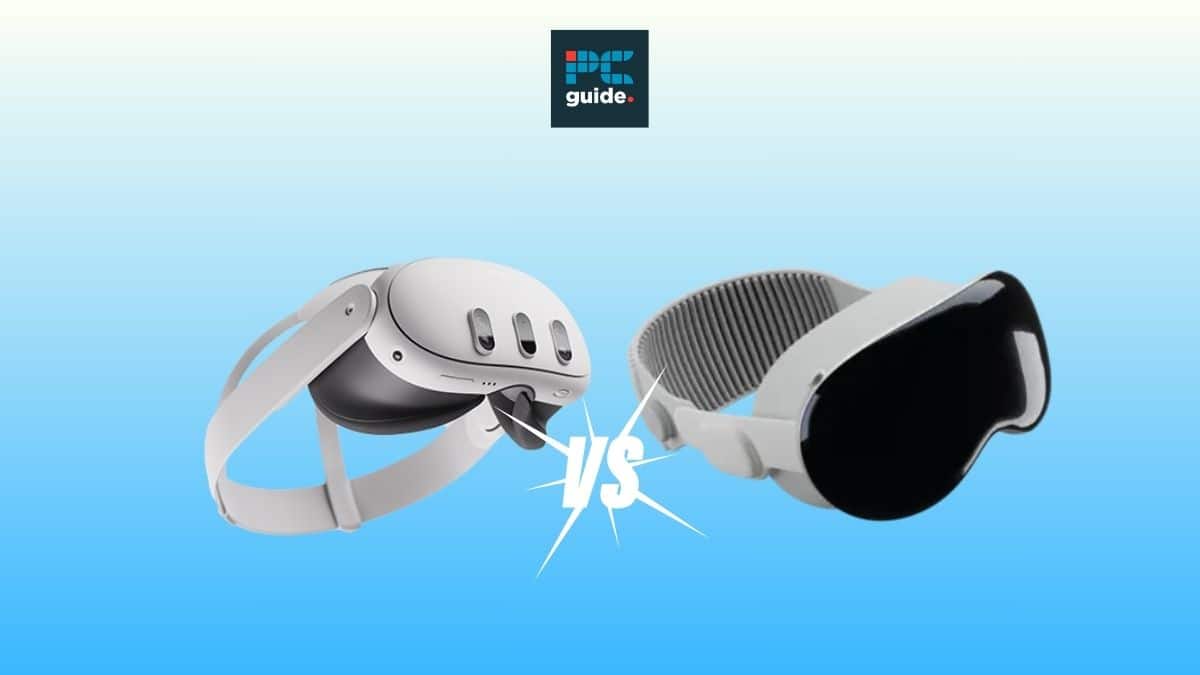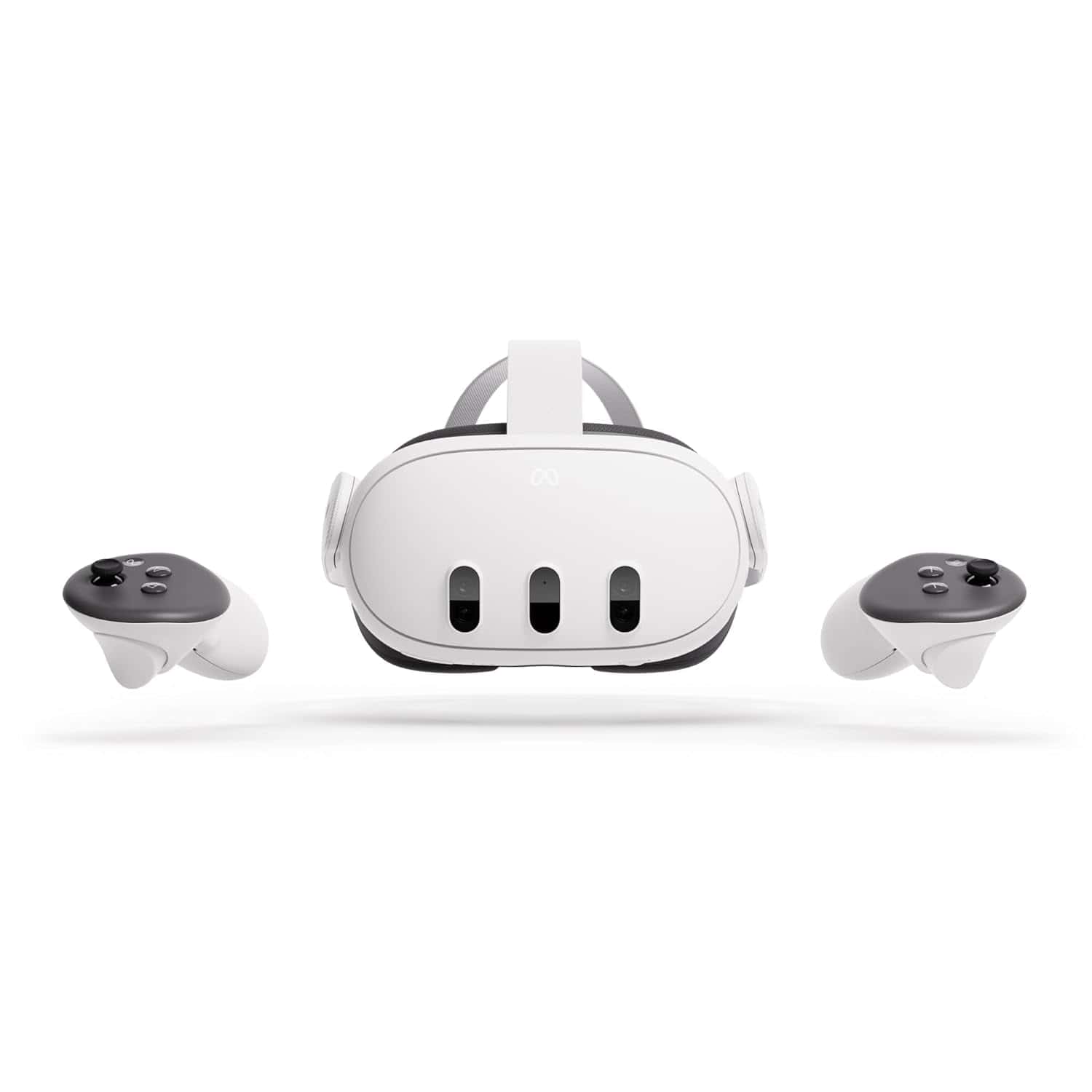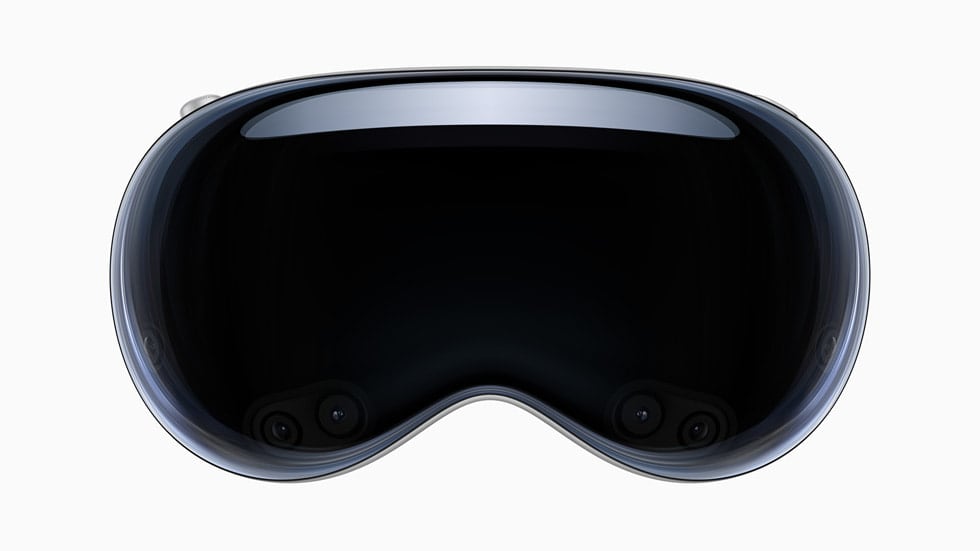Meta Quest 3 vs Apple Vision Pro – do they compare?

Table of Contents
On June 5, 2023, Apple unveiled the Apple Vision Pro, its first mixed-reality headset, and its first new Apple device category since the Apple Watch in 2015. This was shortly after Mark Zuckerberg announced Meta’s next mixed-reality headset, the Meta Quest 3. Meta shared further details about its next flagship model during Meta Connect 2023. Quest 3 started shipping on October 10, 2023. Whereas, Apple Vision Pro arrived on February 2nd, 2024. Having two strong options in the world of spatial computing creates a bit of a dilemma for the buyer. To help you make a better choice, we compare Meta Quest 3 vs Apple Vision Pro in this article.
If you’re keen to find out more about Apple’s virtual reality headset, check out some of our other coverage on the topic. Including our Apple Vision Pro vs Pico VR and our Apple Vision Pro vs Meta Quest Pro.
Prime Day is finally here! Find all the biggest tech and PC deals below.
- Sapphire 11348-03-20G Pulse AMD Radeon™ RX 9070 XT Was $779 Now $739
- AMD Ryzen 7 7800X3D 8-Core, 16-Thread Desktop Processor Was $449 Now $341
- ASUS RTX™ 5060 OC Edition Graphics Card Was $379 Now $339
- LG 77-Inch Class OLED evo AI 4K C5 Series Smart TV Was $3,696 Now $2,796
- Intel® Core™ i7-14700K New Gaming Desktop Was $320.99 Now $274
- Lexar 2TB NM1090 w/HeatSink SSD PCIe Gen5x4 NVMe M.2 Was $281.97 Now $214.98
- Apple Watch Series 10 GPS + Cellular 42mm case Smartwatch Was $499.99 Now $379.99
- ASUS ROG Strix G16 (2025) 16" FHD, RTX 5060 gaming laptop Was $1,499.99 Now $1,274.99
- Apple iPad mini (A17 Pro): Apple Intelligence Was $499.99 Now $379.99
*Prices and savings subject to change. Click through to get the current prices.
Meta Quest 3 vs Apple Vision Pro – specs
Here's a table that showcases how Meta Quest 3 and Apple Vision Pro compare against each other:
| Specification | Meta Quest 3 | Apple Vision Pro |
|---|---|---|
| Processor | Snapdragon XR2 Gen 2 chip | M2 chip, R1 chip |
| RAM | 12 GB | 16GB |
| Storage space | 128 GB and 512 GB | 64GB |
| Display resolution | 2,064 x 2,208 pixels per eye | 4K per eye |
| Refresh rate | 120Hz | 90Hz |
| Display type | LCD | Micro-OLED |
| Weight | ~ 1.1 pounds (600-650 grams) | ~ 1.1 pounds (515 grams) |
| Lenses | Pancake | Custom catadioptric lenses and ZEISS Optical Inserts |
| Controllers | Touch Plus controllers | Hand, eye, and face tracking |
Meta Quest 3 presents some upgrades from its predecessors. Namely, a significantly higher resolution of 2,064 x 2,208 than Quest 2 and Quest Pro. This is quite amazing in itself. However, when we compare it to Apple Vision Pro, the device falls, well short. Apple Vision Pro has a micro OLED display, capable of delivering 4K resolution graphics in each of its pancake lenses. It means that as it can create a more realistic representation of the world around you, the passthrough experience on the Vision Pro is better than the Meta Quest’s, though naturally, neither is perfect.
Apple Vision Pro wins the display battle but loses in refresh rate. The first mixed-reality headset from Apple has a refresh rate of only 90Hz, while Meta Quest 3's is at 120Hz, making it the more suitable choice for fast-paced VR games and gaming via your PC (and harness your computer’s GPU power on your Quest).
Meta Quest 3 features the newly launched Qualcomm Snapdragon XR2 Gen 2 chipset. It is a powerful chip that enhances the performance capabilities of Quest 3. Apple Vision Pro will use the Apple M2 processor and R1 chip.
Talking about the battery life, both stand toe to toe. Meta Quest 3 and Apple Vision Pro will have a battery life of around 2 hours on full charge. So, there's no winner in Meta Quest 3 vs Apple Vision Pro here.
Meta Quest 3 vs Apple Vision Pro – features
When it comes to features, there aren't many differences to highlight between the Meta Quest 3 and the Apple Vision Pro. The primary difference is the hand, face, and eye tracking feature of the Vision Pro. This means there will be no controllers for Apple's headset, as all the actions will be taken based on eye movement/hand gestures, and subsequent eye/hand tracking. Apple Vision Pro does this with the help of its 12 cameras and sensors: six external, two TrueDepth, and four internal.
On the other hand, Meta Quest 3 features Touch Plus controllers, as it does not have the face/eyesight feature. However, it’s still pretty good, as Meta Quest 3's Touch Plus controllers get rid of tracking rings from Quest 2 and Quest Pro. Meta uses the field of view and AI to track and predict hands' movements. Meta Quest 3 uses seven cameras and sensors: four front, two bottom/sides, and one depth.
Both Meta Quest 3 and Apple Vision Pro have depth sensors to create high-quality 3D environments and immersive videos. Meta Quest 3 uses Android's open-source operating system (OS), whereas Apple Vision Pro uses a newly created OS based on its iPad software, called VisionOS.
Both Meta Quest 3 and Apple Vision Pro feature a lot of games. You can play several games on as big a screen as you want. With Apple Vision Pro, you can play over a hundred Apple Arcade games. Meta Quest 3 lets you play over 500 games, which were already available for Meta Quest 2 and Quest Pro. On top of that, Meta said there will be around 100 more games added for Meta Quest 3.
The choice is clear: if you want a VR headset for gaming, Meta Quest 3 is what you should go for. But if you are buying a headset for productivity, Apple Vision Pro is a better choice.
Meta Quest 3 vs Apple Vision Pro – price
Meta Quest 3 comes in two variants. The base model has a 128 GB storage space and costs $499.99. The other Meta Quest 3 model has 512 GB storage space and comes with a price tag of $649.99. On the other hand, Apple Vision Pro is in a higher price range and will start at $3,499 in the US. This large price difference definitely plays a role in making a decision between the two.
Is Meta Quest 3 better than Apple Vision Pro?
Overall, the Apple Vision Pro offers better quality and technology than Meta Quest 3. If you’re budget-free and looking for something that can not only enhance gaming possibilities but also be used in a professional sense then the Apple Vision Pro is definitely for you. That being said, being priced at a staggering $3,499 compared to Meta Quest 3’s $499.99, definitely brings the question of price and performance into the conversation. Is the Apple Vision Pro’s extremely high price point worth the relatively small differences between the two headsets?
Price
Considering the differences between the two products I think that price should play a major role is decision making. The Meta Quest 3 has a much more attractive price and is still an impressive piece of tech.
Final Thoughts
If you’re looking to purchase one of these products, it’s good to consider what its purpose will be; whether it’s purely entertainment or professional. Meta Quest 3 focuses on offering a better experience for gamers, while Apple Vision Pro focuses more on helping professionals increase their productivity.
Thus, both Apple Vision Pro and Meta Quest 3 are better than each other in some aspects. But overall, the best mixed reality experience goes to the iOS hardware this time around.



